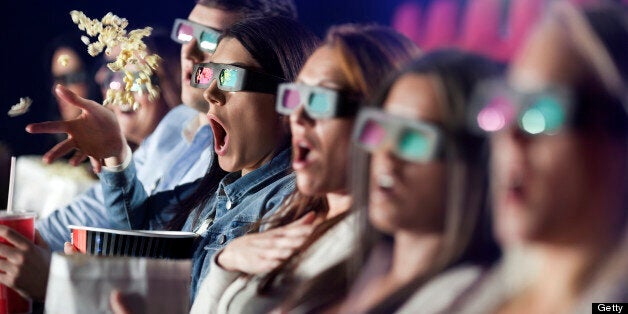
Unannounced, and perhaps unnoticed by the vast majority of its customers, cinema across much of the world is undergoing a quiet revolution. 35mm film, which has been the mainstay of cinema projection for the last 80 years or so, has since the early 2000's been increasingly replaced by digital technology. At the mid-point of this year, around 76% of the world 100,000 screens had converted, with 89% of US and 77% of European screens having made the change.
Inevitably the key driver for this change has been financial, with major and independent studios standing to save billions of dollars going forward when they are now longer required to manufacture and distribute prints in physical form.
But there are additional benefits, for both cinema operators and cinema audiences alike. The most immediate of these - and perhaps the one which has gained most attention - is the advent of digital 3D cinema. While Avatar in 2009/2010 was undoubtedly the highpoint of the format so far - grossing around $2.8billion worldwide - the ability provided by this new technology to provide perfect stereoscopic images has ensure that over the last five years or so, 3D has become a significant and sustained additional revenue stream for studios and cinemas.
Undoubtedly the market for 3D has found its level, and audiences are being more selective as to which films they see in this format, but reports of the demise of 3D cinema seem way off the mark. This year will see over 40 films released to cinema in this format and there are already over 25 slated for 2014.
But there are other, perhaps less obvious, benefits. Digital cinema technology allows cinemas to play a much broader range of film content. Changing 35mm reels is a cumbersome and time-consuming business, so the traditional approach in many cinemas has been to show the same film throughout the day on the same screen, to some extent regardless of how appropriate it is for the audience likely to be around at that time. With digital technology, changing films is a simple 'drag and drop' process, potentially allowing much closer alignment between content and audience.
All of that should result in greater overall box office revenue and fewer cries of 'there's nothing on I want to see' amongst the cinema-going public. But digitisation also provides another way of enticing back through the doors those who haven't been to the cinema for a while. What was originally called 'alternative content' but is now increasingly termed 'event cinema' - live or as-live theatre, ballet, opera, pop concerts and sporting events - is helping to reinvent the big screen experience for many.
Event cinema allows the sector to reach out to a different demographic - sometimes older, often wealthier - than the traditional cinema audience, reacquainting them with the modern cinema environment and boosting coffers at the same time.
And that has had a wider effect. Recognising the demand in particular for high end content, a number of the world's leading cultural organisations - the New York Met Opera, the Royal Opera House and the National Theatre in London, and the Bolshoi Ballet in Moscow - have set up their own operations dedicated to the production and distribution of their works across the globe.
Digitisation has come at a considerable cost - digitising all of the screens in Europe alone will eventually cost some €1.8billion - and has required the establishment of a perhaps unique funding relationship between the two traditionally fractious camps in the cinema industry - exhibition and distribution. As it is, while rapid progress has been made in the US, Japan and Western Europe, wider economic problems in Southern Europe mean that the digital future in that region is by no means yet secured.
Even as those challenges are being confronted, perhaps inevitably the wider industry is already moving on. When senior representatives from across the wider sector met up in Las Vegas in April and more recently in Barcelona last month, it seemed that digitisation has been more or less 'banked'. Discussion at these events centred on the next technological developments, be it so-called '3D' or immersive sound, the use of lasers as a light source, or Higher Frame Rate technology, pioneered by last year's The Hobbit: An Unexpected Journey and likely to be a key feature of future films by both Peter Jackson and James Cameron.
After almost a century of relying on the same tried and tested technology, the big screen experience is bracing itself for a new digital age and the dizzying whirl of new technological developments that entails.
It should be a Hell of a ride.